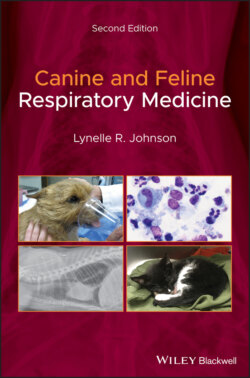Читать книгу Canine and Feline Respiratory Medicine - Lynelle Johnson R., Lynelle R. Johnson - Страница 27
History
ОглавлениеAs suggested earlier, the presence and character of cough can sometimes be helpful in distinguishing cardiac from lung or airway disease. Typically, the cough in dogs with airway disease is chronic, harsh, paroxysmal, and can be dry or productive. In contrast, dogs in congestive heart failure will have a soft, moist cough, as do some dogs with pneumonia. Cats with bronchial disease virtually always have a history of cough, while only 5–25% of cats with congestive heart failure might have cough in the history (Dickson et al. 2018). Cats with airway disease can present with rapid breathing, although in a study of cats presented to the veterinarian for respiratory distress, severe tachypnea was more common in cats with cardiac disease (Dickson et al. 2018). Pulmonary edema is often associated with an acute onset of clinical signs referable to the respiratory tract in association with constitutional signs of lethargy, inappetence, and depression. Animals with pneumonia frequently have a vague history of illness that can be acute or chronic but is also characterized by anorexia, malaise, and weight loss. Dog with cardiac disease are often cachectic and lethargic, while dogs with chronic bronchitis are typically robust or obese and have a healthy appetite. Dogs or cats with pulmonary fibrosis generally display a gradual deterioration in exercise tolerance, and tachypnea or difficulty breathing is noted later during the course of disease.
